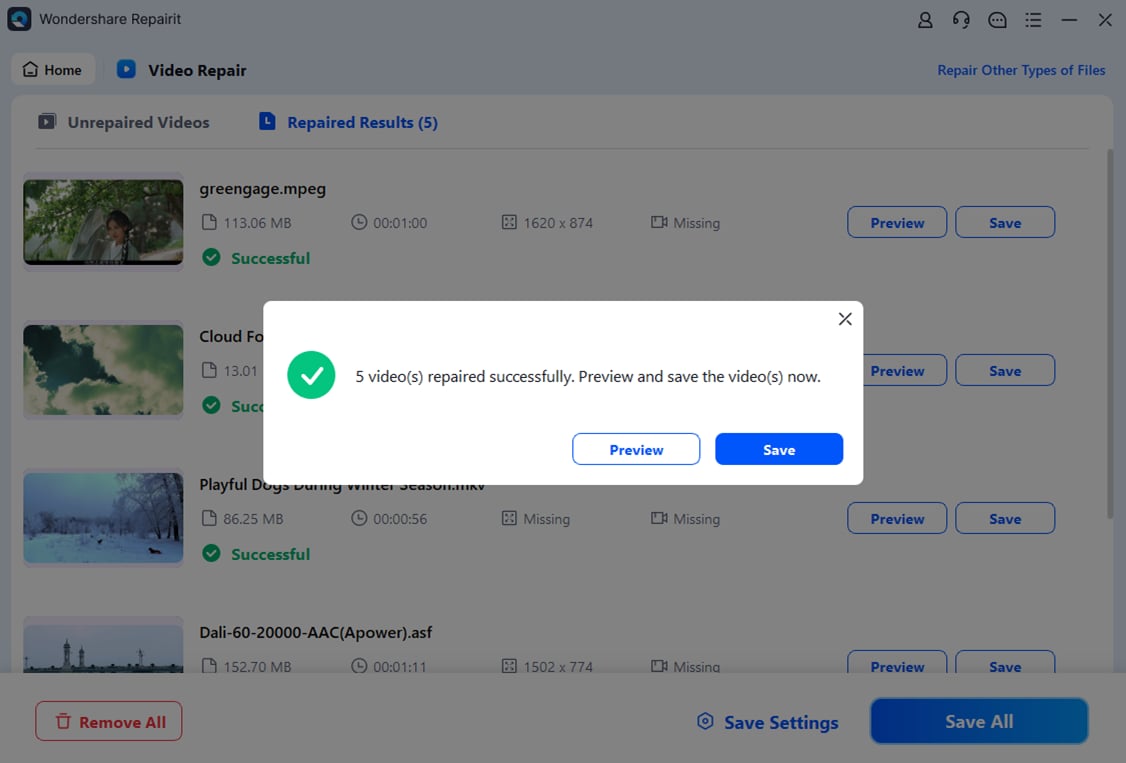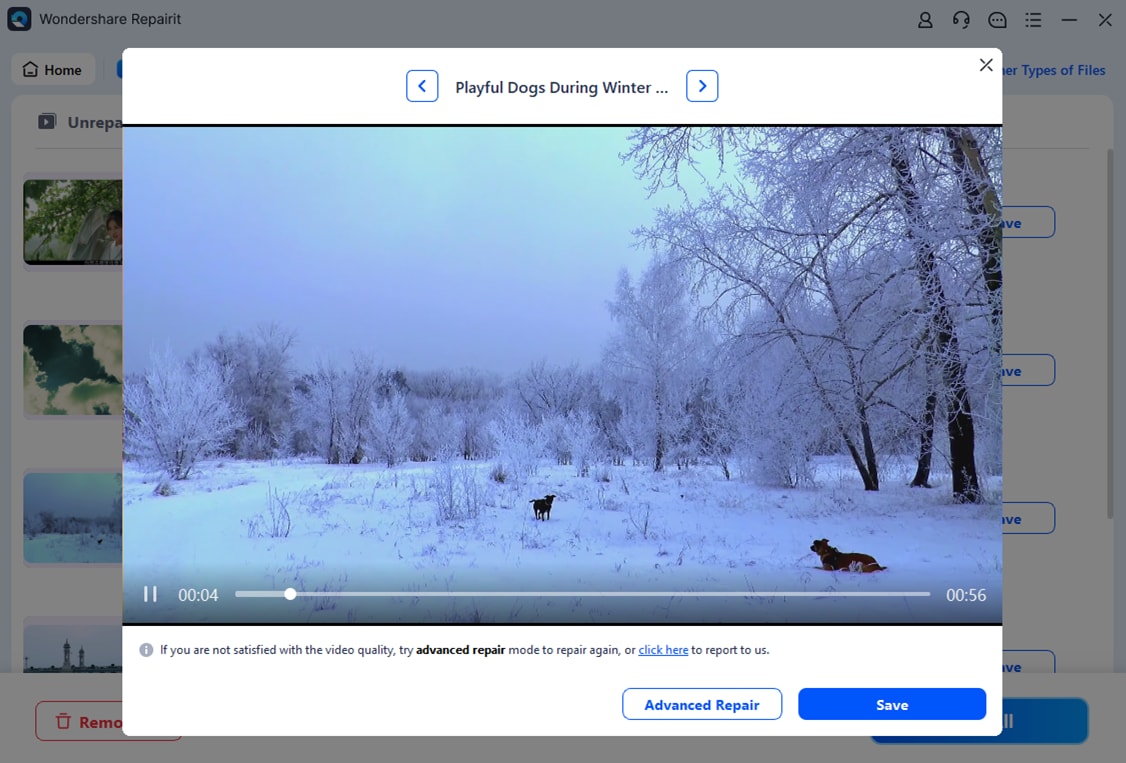Looking for the best video codec? This guide will show you top picks for better quality and smooth videos. Whether you're a creator, streamer, or viewer, these tools help reduce file size and improve clarity. Explore 7 best quality video codecs that'll upgrade your video experience.
In this article
What is the Importance of Video Codec?
A video codec is a tool that shrinks and expands digital video files. It's used to make files smaller for easy storage, sharing, and viewing, without losing quality. Wondering why codecs are important? Here's the reason:
- Shrinking File Sizes. Video codecs make video files smaller without losing much quality. That means you can store more videos on your device, and they'll load faster online.
- Smooth Streaming. When you're watching videos online, codecs help you stream without buffering. They ensure your video plays smoothly, even if your internet isn't super-fast.
- Better Quality. Codecs also enhance video quality. They squeeze in more details so your videos look sharper and clearer.
- Compatibility. Different devices speak different video languages. Codecs help videos work on various gadgets, from phones to smart TVs.
- Video Conversions. Codecs do the heavy lifting when you convert videos from one format to another. They ensure your converted video looks great on any device.
Video codecs make the whole video-watching experience awesome, from saving space on your device to delivering high-quality visual videos.
What are the Best Video Codecs Just For You?
Video codec indeed plays an important part in the quality of your videos. Here, we will talk about eight great video codecs for making videos. The one you pick depends on what you want, making choosing the perfect fit for your video projects easy. Here they are:
1. H. 264 (AVC)

H.264, also known as Advanced Video Coding (AVC), stands out as a widely used and adaptable video codec, especially for streaming. It's widely used in Cable TV and Blu-ray because many devices and browsers support it. H.264 delivers good video quality while keeping file sizes smaller.
Supported Video Codecs
MP4, MOV, F4V, 3GP, and TS
2. H. 265 (HEVC)

H.265, also called High-Efficiency Video Coding (HEVC), is an upgraded version of H.264 and is faster. It's excellent for squeezing detailed or cinematic videos, offering better quality than H.264 at the same file size. However, not all devices and browsers support H.265, making it less versatile.
Supported Video Codecs
MP and SPP
3. H. 266 (VVC)

H.266, also called Versatile Video Coding (VVC), is the next-gen successor to HEVC (H.265), developed by Fraunhofer. It's designed to cut data needs by 50%, making video files transmit twice as fast as HEVC. This advancement is especially promising for HD video on mobile streaming.
Supported Video Codecs
Supports its own video compression format, H.266/VVC.
4. MKV

The Matroska format is a free and open-source project. It is a digital container that can hold your videos. MKV uses .mk3d for special 3D videos. It's good at keeping videos looking great while ensuring they don't take up too much space on your device.
MKV works with different video compression methods, like H.264 and H.265 (HEVC), so you can save videos without losing quality. People often use Matroska (MKV) for TV shows and movies because it can keep many sounds and words in one place.
Supported Video Codecs
Almost all common types.
5. WMV

WMV, which stands for Windows Media Video, is a technology created by Microsoft for compressing and storing videos. It's made to work best with Windows computers. WMV files are known for being small but still looking pretty good. They're often used for watching videos online or showing presentations on a Windows computer.
Videos with .wmv in their name use Windows Media Video, and .wma is for audio with Windows Media Audio. Sometimes, you might find a video with .asf instead of .wmv. That means it's like a WMV video but in a different box.
Supported Video Codecs
Windows Media Video 9/8/7, VC-1, MPEG-4.
6. FLV

FLV is a video format designed to show great videos using Adobe Flash Player on the internet. Macromedia made it and includes a short header, video, mixed audio, and meta descriptions. FLV can compress data more than MP4 but still keeps good video quality, saving a lot of internet bandwidth.
There are two kinds of Flash Video files: .flv and .f4v. Both are made by Adobe and work with Flash Player, but they differ. FLV, the older version, encodes video and audio data like SWF, while F4V files follow a standard ISO-based format.
Supported Video Codecs
Sorenson Spark, H.264, VP6.
7. MOV

MOV, also known as QuickTime File Format (QTFF), is a special type of video created by Apple. It's like MP4 and can hold videos, sounds, and words. MOV videos look really good because they're compressed well and can be in high definition. They were first made for Apple's QuickTime Player but can now be used on iPhones and Windows.
Supported Video Codecs
Apple ProRes, Cinepak, Component Video, DV, DVC Pro 50, H.263, H.264, H.265, Motion JPEG, MPEG-2, MPEG-4 Part 2, QuickTime Animation and Sorenson Video 2/3
How to Repair the Best Video Codec Not Playing Issue?
If your videos aren't playing right, it could be because of problems with the video codecs. These special codes help your device understand and play the video properly. Sometimes, the codec used to make the video doesn't match your device's needs, or the video file might be damaged.
Other times, your device might miss the right codec or have too many conflicting ones. When you're stuck with codec issues, don't worry! Wondershare Repairit is here to help. It's like a magic tool that can fix your broken videos, no matter what format they're in, whether it's MKV, WMV, FLV, or MOV. And the best part? You can fix as many videos as you want, no matter how big they are.

-
Repair damaged videos with all levels of corruption, such as video not playing, video no sound, out-of-sync video or audio, playback errors, header corruption, flickering video, missing video codec, etc.
-
Repair full HD, 4K, and 8K videos and support 18 popular formats, including MOV, MP4, M2TS, INSV, M4V, WMV, MPEG, ASF, etc.
-
Repair damaged or corrupted videos caused by video compression, system crash, video format change, etc.
-
Repair critically damaged or corrupted videos available on SD cards, mobile phones, cameras, USB flash drives, etc.
-
Repairit has a quick and advanced scanning mode. You can use either depending on the level of corruption the video file has undergone.
-
No limit to the number and size of the repairable videos.
-
Support Windows 11/10/8/7/Vista, Windows Server 2003/2008/2012/2016/2019/2022, and macOS 10.10~macOS 13.
Whether you're using a Mac or a Windows computer, Repairit has your back. It does some diagnostics to look and fix your damaged video files. So next time you're having trouble with your videos, just download Repairit and let it work magic!
If you ever wonder how Repairit does the process of fixing corrupted video codecs, here’s how:
Step 1. Download Wondershare Repairit for Windows or Mac. After that, click the +Add button within the Video Repair section to fix the damaged video codecs in the repair list.

Step 2. After uploading the damaged video codecs, please select the Repair button to start the video repair process.

When the repair is done, a window asking you to save and view the fixed video codecs will appear. Simply click OK to save them.

Step 3. Click the Preview button to view the repaired video codecs. If the repaired video codecs appear good for you, select Save and choose a location to store them.

Conclusion
The right video codec is important for getting great-quality videos that work well with different devices. Among the top ones we talked about are popular because they make videos look awesome while keeping file sizes small. Each codec has its good and bad points, so it's essential to think about what you need for your project.
FAQ
-
What are the most widely used video codecs?
The most commonly used video codecs include H.264 (AVC), H.265 (HEVC), and MPEG-4. These codecs are widely supported across various devices and platforms. -
Are there any free video codecs available?
Yes, several video codecs are available for free, including VP9, AV1, and MKV. These open-source codecs offer high-quality video compression without licensing fees. -
How do I know which video codec to use for my project?
The choice of video codec depends on various factors such as intended use, compatibility, and desired video quality. Consider factors like platform support, file size requirements, and others. Experimenting with different codecs can help determine the best fit for your needs.


 ChatGPT
ChatGPT
 Perplexity
Perplexity
 Google AI Mode
Google AI Mode
 Grok
Grok

